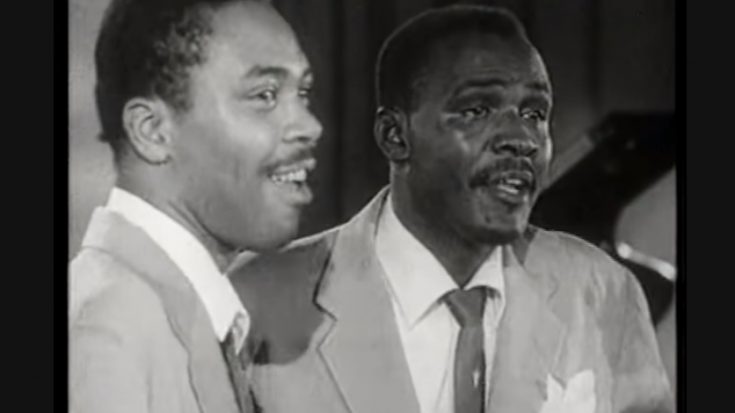The 5 Essential Songs From The Biggest Acts Of The 50’s – The Clovers

The Clovers performing Little Mama live- JUSTASITTINANDAROCK / Youtube
While some of the biggest names in rock n’ roll either came in bands or solo acts, vocal groups weren’t unheard of. The Temptations, The Platters, even The Beach Boys, were pioneers when it came to non-instrumented performances, relying instead on their vocal prowess to rock the crowd. One of the most influential of these vocal groups were The Clovers, established in 1946 by high school boys Harold Lucas, Thomas Woods, and Billy Shelton. Performing various styles like rhythm n’ blues, doo-wop, and rock n’ roll, The Clovers dominated the scene with their classic charm and rich vocal harmonies. Here are some of the best songs from one of the biggest players in the 50’s!
“One Mint Julep” – (1952)
Written by Rudy Toombs, the track was adapted by The Clovers in 1951, and became one of the first “drinking” songs to ever reach the mainstream. It was the first to feature a tenor sax as well, with the goal of being a top competitor as a rhythm n’ blues group, steering away from their doo-wop formula. The song’s trilling piano progression and modulated vocal parts adds to the charm of the track as a whole.
“Lovey Dovey” – (1954)
This rhythm n’ blues record was written by Eddie Curtis and Ahmet Ertegun, and was initially recorded by The Clovers, going down the line to be one of their most successful tracks. The slow, budding progression drives the track along, with scat vocalizations and detailed vocal accents that adds minor yet notable details in the harmonically-rich track.
“Devil Or Angel” – (1956)
A smooth and creamy vocal progression and pure melodic arrangements give this track a certain charm that’s only heightened by the rich and distinct solo vocal parts. Although other versions of “Devil Or Angel” have been recorded after The Clovers’, none of them have surpassed the chart successes of the original song.
“Fool, Fool, Fool” – Dance Party (1951)
“Fool, Fool, Fool” became The Clovers’ second rhythm n’ blues chart topper, and features a slow progression that has intertwining vocal harmonies slipping in and out of the main melody. The notable driving bass vocals provide a certain depth and dimension to the song, adding feel and emotion to the slow lurching of the track.
“Don’t You Know I Love You” – The Clovers (1951)
Exuding class and feel is the Clovers’ first chart topping single, “Don’t You Know I Love You”. A driving three-chord bass progression is complemented by a playful piano riff, with overlapping sax parts as well. Of course it isn’t complete without the interlacing vocal harmonies that magically makes use of high and low registers to make the track sound rich and solid.
















